Hyperreal Sound
For a live performance, if the primary production objectives are to expand the audio panorama and provide realistic localization, a system that supports Hyperreal Sound is the right solution. Unlike a traditional stereo layout, L‑ISA Hyperreal Sound is based on a horizontal arrangement of loudspeaker arrays that are distributed across – and often beyond – the full width of the stage. This Frontal configuration relies on overlapping coverage so that as much audience as possible hears all the arrays. A Frontal System consists of three systems: the Scene System, subwoofers and the Extension System.
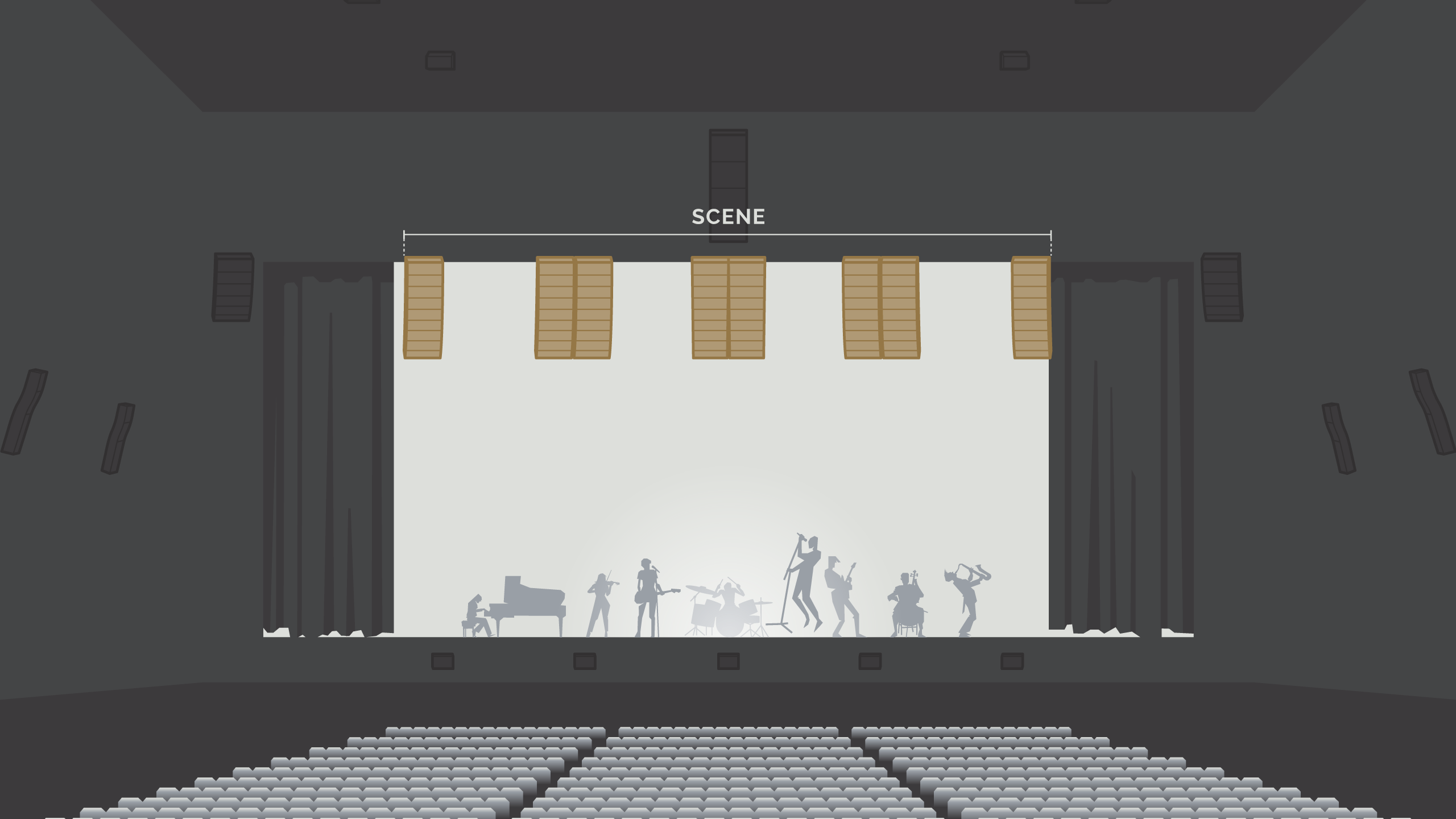 L-ISA Focus
L-ISA Focus
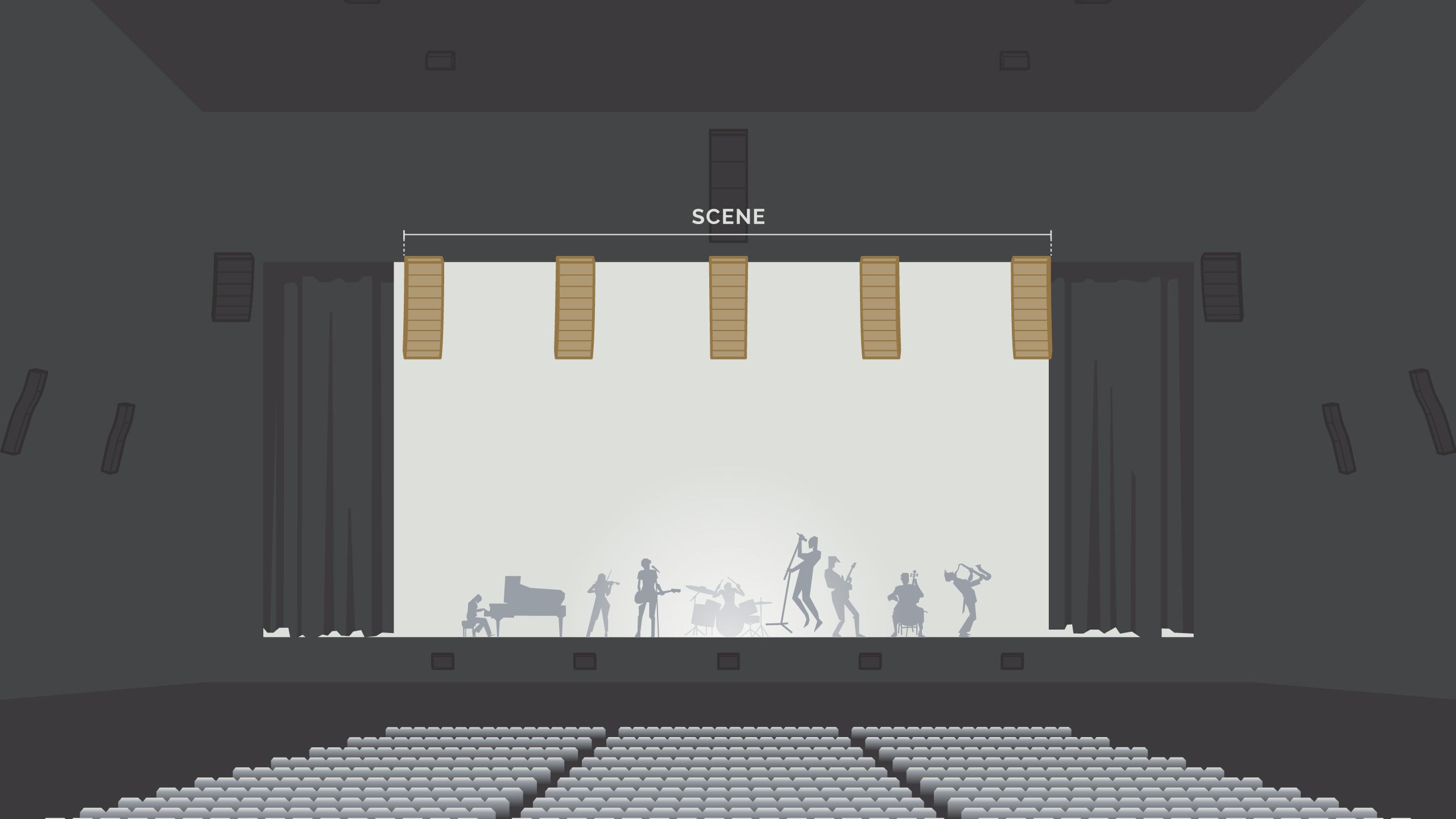 L-ISA Wide
L-ISA Wide
Scene System
A high-resolution scene system is an arrangement of speaker arrays that match the width of the performing zone. The scene system allows for the accurate localization and separation of sound sources and tracking of performers. The recommended scene system will vary for differing content. An L‑ISA Wide scene design uses identical, evenly spaced arrays to support most content including jazz, classical, spoken word and contemporary. An L‑ISA Focus (patent pending) scene design uses different system dimensioning and placement to reproduce rock and electronic music with high LF contour requirements.
Compared to a traditional Left/Right deployment, the added clarity provided by an L‑ISA Scene system reduces the need for delay systems.
The capacity for the system to provide a spatial experience with clarity and impact well over 110 m from stage was very impressive.
Scott Willsallen, Audio consultant, Ennio Morricone
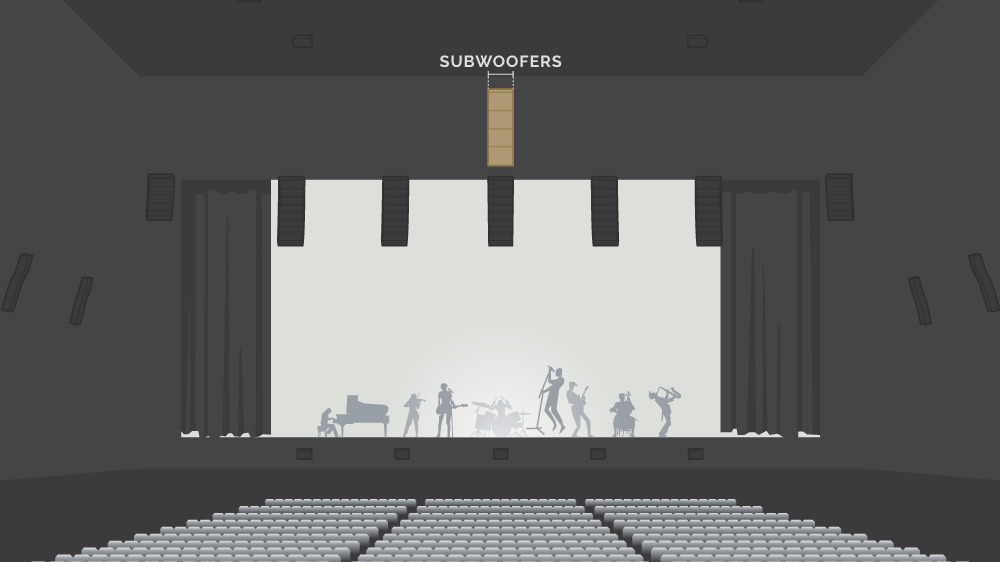
Subwoofers
A central subwoofer configuration is recommended to maximize the consistency of sub-low frequency response and sound pressure level throughout the audience area.
In this centre flown position, cardiod and endfire configurations can further optimize the sound pressure level distribution and minimise the low frequency energy on the stage.
Learn about the Efficiency of Flown vs. Ground Stacked Subwoofer Configurations
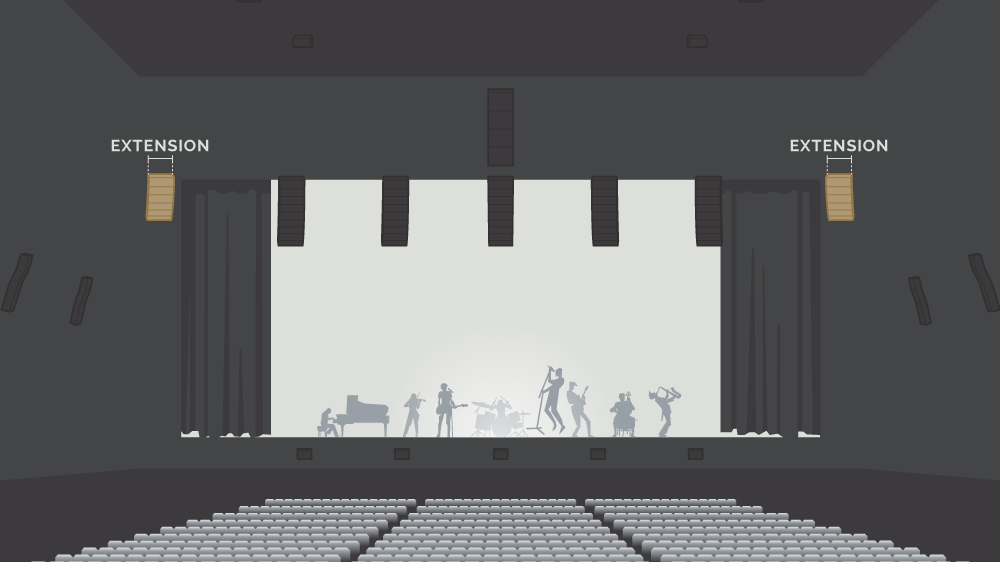
Extension System
Optional Extension loudspeaker arrays expand the soundscape as far as the side walls of the venue, exaggerating the width of the sonic panorama, improving envelopment and reinforcing the hyperreal experience.
With Extension loudspeaker arrays, a mixing engineer can create very different moments during a live show – from intimate, focussed solo moments to ultra-wide, immersing soundscapes.
We’re beginning to see what can be done with L‑ISA and immersive technologies. It’s a whole new palette and creative canvas for artists and sound engineers to paint with.
Fred Vogler, Grammy Award-winning recording and mixing Engineer
FOH Engineer, LA Philharmonic, Hollywood Bowl
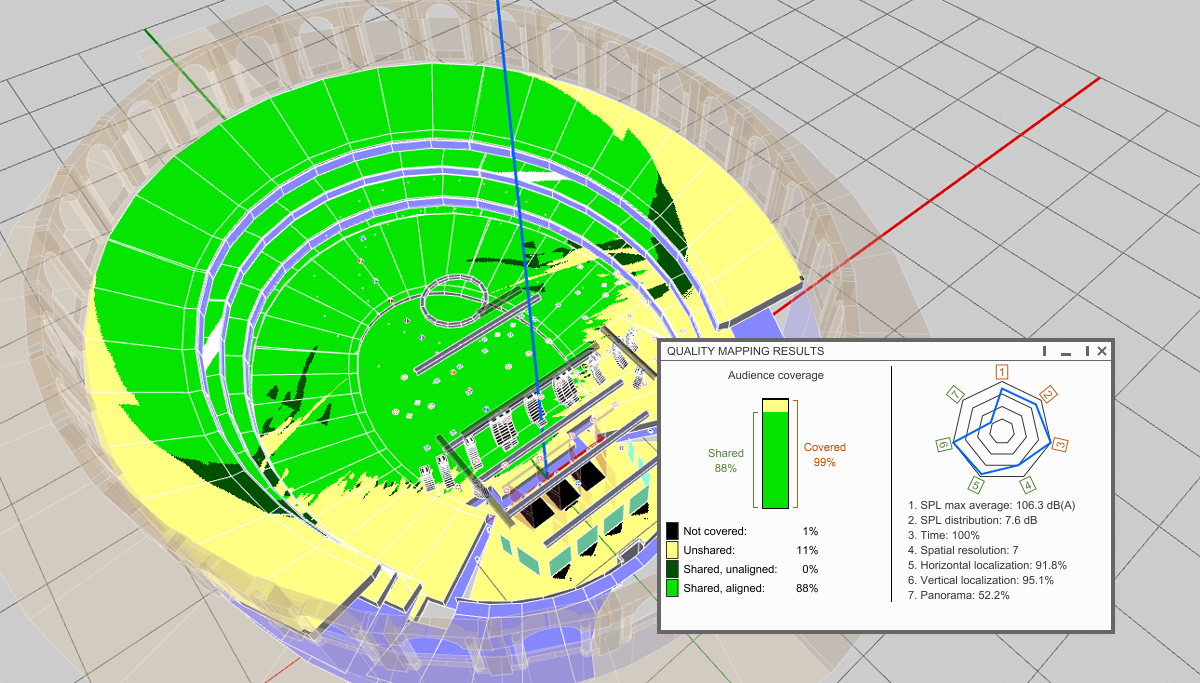
Design Qualification
Regardless of the specifics of the design, all L‑ISA configurations adhere to a systematic process of design qualification. New features added to L‑Acoustics Soundvision modeling software assess designs against a protocol that evaluates and scores acoustic performance and the qualitative elements that impact the audience’s perception of audio.
Seven different parameters can be continuously optimized to contribute to a project score that ultimately ensures achievement of design requirements. These include:
Coverage Performance – scored according to SPL Max, SPL Distribution and Time
Hyperrealism – scored according to Spatial Resolution and Horizontal and Vertical Localization
Immersion – scored for Panorama and Envelopment